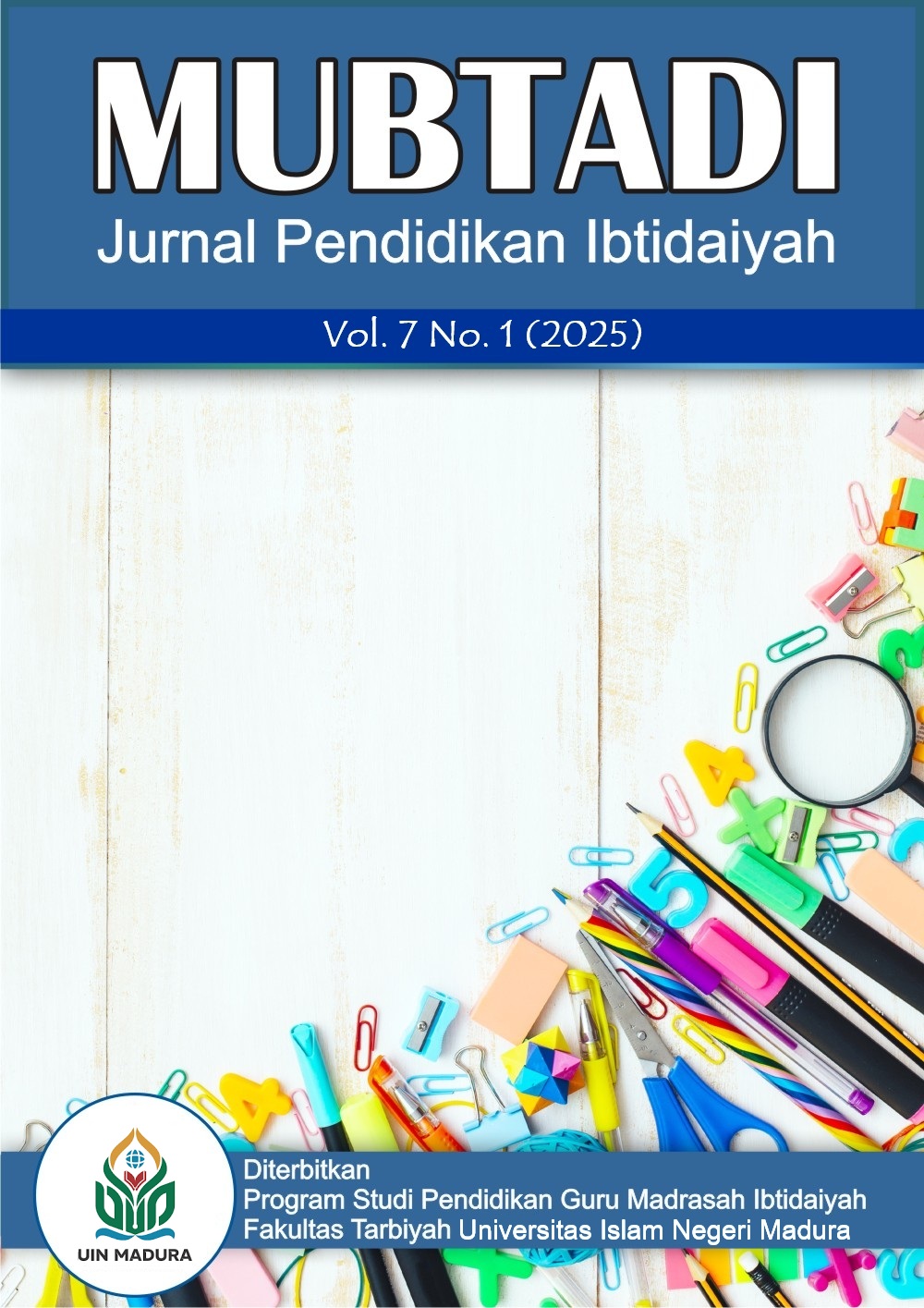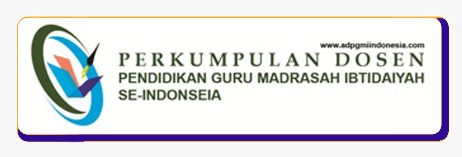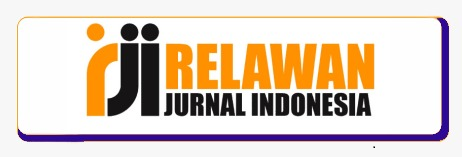SOCIAL EMOTIONAL LEARNING (SEL) UNTUK MENINGKATKAN PARTISIPASI BELAJAR SISWA SD
 Abstract views: 441
,
Abstract views: 441
,
 pdf downloads: 248
pdf downloads: 248
Abstract
Pentingnya artikel ini dibuat berangkat dari permasalahan rendahnya partisipasi belajar siswa di Sekolah Dasar (SD) yang menjadi hambatan signifikan dalam pencapaian tujuan pendidikan holistik. Pembahasan akan menganalisis secara konseptual dan empiris peran Social Emotional Learning (SEL) sebagai pendekatan integral untuk meningkatkan keterlibatan siswa dalam proses pembelajaran. Analisis singkat akan mencakup definisi SEL berdasarkan kerangka CASEL, indikator partisipasi belajar siswa, serta mekanisme teoritis dan bukti empiris bagaimana kelima kompetensi inti SEL (kesadaran diri, manajemen diri, kesadaran sosial, keterampilan berelasi, dan pengambilan keputusan bertanggung jawab) secara sinergis berkontribusi pada peningkatan motivasi, interaksi, dan keterlibatan aktif siswa. Abstrak ini menyimpulkan bahwa implementasi SEL yang terstruktur dan terintegrasi dalam kurikulum sekolah dasar memiliki potensi besar untuk menciptakan lingkungan belajar yang suportif, meningkatkan kesejahteraan emosional siswa, dan pada akhirnya, mendorong partisipasi belajar yang lebih tinggi dan berkelanjutan.
Downloads
References
Astuti, P., Syahfutra, R., & Susilawati, S. (2021). Pengambilan keputusan bertanggung jawab dalam pembelajaran sosial emosional. Jurnal Pendidikan dan Pembelajaran Dasar, 5(2), 112-125.
Budiman, A. (2006). Pendidikan karakter: Konsep dan implementasi. Remaja Rosdakarya.
CASEL. (2005). Safe and sound: An educational leader's guide to evidence-based social and emotional learning programs. CASEL.
CASEL. (n.d.). Fundamentals of SEL. Retrieved from https://casel.org/fundamentals-of-sel/
CASEL. (n.d.). What is the CASEL Framework? Retrieved from https://casel.org/casel-sel-framework-11-2020/?view=true
CASEL. (n.d.). What Does the Research Say? Retrieved from https://casel.org/fundamentals-of-sel/what-does-the-research-say/
Catalano, R. F., Haggerty, K. P., Oesterle, S., Fleming, C. B., & Hawkins, J. D. (2004). The importance of bonding to school for healthy adolescent development. Journal of School Health, 74(7), 252-261.
Cipriano, C., Strambler, M., & Naples, L. (2023). A systematic review and meta-analysis of the effects of universal school-based SEL programs in the United States: Considerations for marginalized students.
Collie, R. J., Shapka, J. D., & Perry, N. E. (2012). Predicting teachers’ emotional exhaustion: The influence of students’ social-emotional competence and teachers’ self-efficacy. Journal of Educational Psychology, 104(4), 1102–1113.
Czauderna, J. (2023). Social awareness in elementary students: A guide for social emotional learning. Everyday Speech. Retrieved from https://everydayspeech.com/sel-implementation/building-social-awareness-in-elementary-students-a-guide-for-social-emotional-learning/
Dimiyati, & Mudjiono. (2009). Belajar dan pembelajaran. Rineka Cipta.
Durlak, J. A., Weissberg, R. P., Dymnicki, A. B., Taylor, R. D., & Schellinger, K. B. (2011). The impact of enhancing students’ social and emotional learning: A meta-analysis of school-based universal interventions. Child Development, 82(1), 405–432.
Everyday Speech. (n.d.). The importance of teaching self-awareness to elementary students. Retrieved from https://everydayspeech.com/sel-implementation/the-importance-of-teaching-self-awareness-to-elementary-students/
Everyday Speech. (n.d.). The power of choice: How to teach decision-making skills to elementary students. Retrieved from https://everydayspeech.com/sel-implementation/the-power-of-choice-how-to-teach-decision-making-skills-to-elementary-students/
Fredricks, J. A., Blumenfeld, P. C., & Paris, A. H. (2004). School engagement: Potential of the concept, state of the evidence. Review of Educational Research, 74(1), 59-109.
George, M., Kincaid, D., & George, M. (2007). School-wide positive behavior support: An introduction. University of South Florida.
Gurukreator.id. (n.d.). Strategi meningkatkan partisipasi siswa dengan teacher talk moves. Retrieved from https://gurukreator.id/strategi-meningkatkan-partisipasi-siswa-dengan-teacher-talk-moves/
Handayani, S. (2013). Pengembangan partisipasi belajar siswa. Universitas Negeri Padang.
Hoffman, J. (2025). Empowering educational leaders: Elevating social-emotional learning through transformative professional learning. Sacred Heart University.
Jones, S. M., & Bouffard, S. M. (2012). Social and emotional learning in schools: From programs to strategies. Harvard Graduate School of Education.
Korpershoek, H., Harms, T., de Boer, H., van Kuijk, M., & Doolaard, S. (2016). A meta-analysis of the effects of instructional strategies on student engagement and academic performance in elementary education. Educational Research Review, 19, 102–116.
Lipton, L., & Hubble, D. (2010). Menumbuhkembangkan kemandirian belajar: Mengoptimalkan kecerdasan baca-tulis, membangun lingkungan belajar, mengevaluasi perkembangan siswa. Nuansa.
Mahoney, J. L., Durlak, J. A., & Weissberg, R. P. (2018). An update on social and emotional learning outcomes: A meta-analytic review of school-based universal SEL interventions. Child Development, 89(6), 1999-2012.
Margareta, M., & Wahyudin, D. (2019). Self-efficacy akademik siswa: Studi kasus di sekolah menengah kejuruan. Jurnal Psikologi Pendidikan dan Bimbingan, 5(1), 1-10.
Martin, Y. (2020). Qualitative research methods. Sage Publications.
McCormick, M. (2019). Social emotional learning in the classroom. University of St. Thomas.
Mental Health America. (n.d.). 10 tips for teachers to practice social-emotional learning in the classroom. Retrieved from https://mhanational.org/blog/10-tips-for-teachers-to-practice-social-emotional-learning-in-the-classroom
Moningka, R. (2022). Keterlibatan Social-Emotional Learning (SEL) dalam Pembelajaran. Jurnal Borneo Science and Social Studies, 8(4), 579-596.
Navigate360. (n.d.). What is self-awareness? Why does it matter in schools? Retrieved from https://navigate360.com/blog/what-is-self-awareness-why-does-it-matter-in-schools/
Ningrum, T. A., & Wulandari, S. (2024). Studi fenomenologis pengalaman guru dalam menumbuhkan keterampilan sosial siswa. Jurnal Pendidikan Dasar, 10(1), 45-58.
N2Y. (n.d.). Teaching self-management for independence. Retrieved from https://www.n2y.com/blog/teaching-self-management-for-independence/
Nurmalasari, R., Marsono, M., & Mahamad, A. K. (2021). Contribution of job readiness application and student competency towards job readiness and job opportunities in industry. 7th International Conference on Electrical, Electronics and Information Engineering: Technological Breakthrough for Greater New Life, ICEEIE 2021.
Oliveira, A. M., Sousa, A. M., & Silva, M. (2021). Self-management skills and their impact on student well-being and academic performance. Journal of Educational Psychology, 113(3), 567-580.
Opinesti, A. (2019). Jenis-jenis partisipasi siswa dalam pembelajaran. Universitas Pendidikan Indonesia.
Panorama Education. (n.d.). The impact of social emotional learning (SEL) on student engagement. Retrieved from https://answerthis.io/questions/the-impact-of-social-emotional-learning-sel-on-stu
Panorama Education. (n.d.). SEL impact on academics. Retrieved from https://www.panoramaed.com/blog/sel-impact-academics
Payne, A. A., Gottfredson, D. C., & Gottfredson, G. D. (2003). The social context of aggressive behavior: An examination of the relationship between school climate, social control, and aggression. Journal of Research in Crime and Delinquency, 40(3), 291-322.
Positive Action. (n.d.). Teaching self-management skills. Retrieved from https://www.positiveaction.net/blog/teaching-self-management-skills
Poulou, M. (2017). The emotional experience of teaching: The role of teachers' social-emotional competence. Teaching and Teacher Education, 63, 219–228.
Ramirez Butavand, C., & Garcia-Cabrera, A. M. (2020). Problem-based learning in higher education: A systematic review. Journal of Problem-Based Learning in Higher Education, 8(1), 1-15.
Riley, D. (2019). Social-emotional learning: A guide for educators. ASCD.
Rosanbalm, K. (2021). Social emotional learning and the COVID-19 pandemic: Implications for policy and practice. Child Trends.
Shaifudin, A. (2020). Pendekatan sosio-emosional dalam pembelajaran. Jurnal Pendidikan Islam, 12(1), 1-15.
Shrestha, S., & Shrestha, S. (2021). Self-awareness and emotional intelligence development in higher education. International Journal of Educational Research, 108, 101-115.
Simons-Morton, B. G. (2004). Social and psychological influences on adolescent substance use: The importance of school bonding. Journal of School Health, 74(7), 262-269.
Slameto. (2010). Belajar dan faktor-faktor yang mempengaruhinya. Rineka Cipta.
Smart Technologies. (n.d.). Social awareness and collaboration: A deeper dive into social-emotional learning in the classroom. Retrieved from https://www.smarttech.com/education/resources/article/social-awareness-and-collaboration
Solihatin, E., & Raharjo, S. (2008). Cooperative learning: Analisis model pembelajaran IPS. Bumi Aksara.
Sorbet, S., & Notar, C. (2022). The impact of social emotional learning on student achievement. Journal of Behavioral and Social Sciences, 14(2), 45-58.
Suryosubroto, B. (2009). Proses belajar mengajar di sekolah. Rineka Cipta.
Taylor, R. D., Oberle, E., Durlak, J. A., & Weissberg, R. P. (2017). Promoting positive youth development through school-based social and emotional learning interventions: A meta-analysis of 50 years of research. Child Development, 88(4), 1156–1171.
Universitas Islam Negeri Suska Riau. (n.d.). Partisipasi belajar siswa. Retrieved from(http://repository.uin-suska.ac.id/13002/7/7.%20BAB%20II_2018515PIPS-E.pdf)
Universitas Pendidikan Indonesia. (n.d.). Konsep partisipasi belajar. Retrieved from http://repository.upi.edu/111776/3/s_pgsd_0604613_chapter2.pdf
Wallace Foundation. (n.d.). Preparing for effective SEL implementation. Retrieved from(https://www.wallacefoundation.org/knowledge-center/Documents/Preparing-for-Effective-SEL-Implementation.pdf)
Wallace Foundation. (n.d.). Navigating social and emotional learning from the inside out. Retrieved from https://wallacefoundation.org/report/navigating-social-and-emotional-learning-inside-out
Wigelsworth, M. (2020). The impact of social and emotional learning on student outcomes: A systematic review. University of Cambridge.
Williamson, B. (n.d.). Teaching responsible decision making skills. EVERFI. Retrieved from https://everfi.com/blog/k-12/responsible-decision-making/
Yuliandri, B. S., & Wijaya, H. E. (2021). Social Emotional Learning (SEL) to reduce student academic stress during the COVID-19 pandemic. Proceeding of Inter-Islamic University Conference on Psychology, 1(1), 1–8.
Yulindrasari, H., Adriany, V., & Kurniati, E. (2023). Rethinking the discourse of school readiness in Indonesian early childhood education. In Education in Indonesia: Critical perspectives on equity and social justice (pp. 59-73). Singapore: Springer Nature Singapore.
Zilva, R. (2023). Dampak pembiasaan kesadaran sosial terhadap kecerdasan emosional siswa. Jurnal Pendidikan dan Kebudayaan, 9(1), 78-90.
Mubtadi: Jurnal pendidikan ibtidaiyah, adalah jurnal yang tidak berbasis komersial. tetapi memberikan lisensi kepada penulis atas karyanya. naskah penulis yang sudah di muat dapat dibuka oleh siapapun dan dapat diperguanakn oleh siapapun dengan catatan berbagi informasi tanpa dipungut baiaya apapun.



.jpg)










